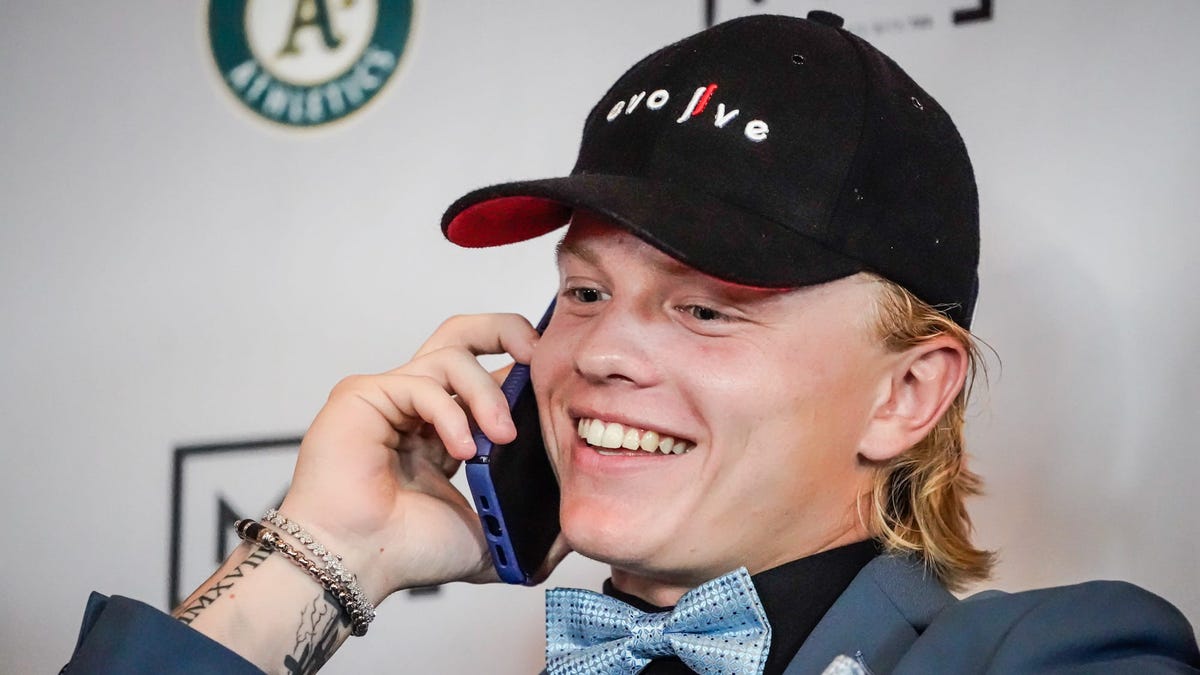
The 2023 Major League Baseball draft, which began Sunday and runs through Tuesday, features 20 rounds in which more than 600 amateur players will be picked. If that sounds like a lot of selections, in previous decades, more than twice as many players were chosen in 60-plus rounds.
Thanks in part to a pandemic and contraction of affiliated minor league teams, Major League Baseball has cut the draft by more than half. It’s now especially important for players at all levels to make the right moves to stand out.
However, knowing how to prepare to get noticed can be helpful to not only those with pro aspirations but to youth players who want to play in high school and high school players who want to play in college. USA TODAY Sports recently spoke with two high-ranking major league front-office officials – one from an American League team, one from a National League team – about ways baseball players of all ages can stand out.
Based on our discussions as well as insight I have gleaned as a high school baseball player and later a sports journalist and sports parent, here are steps you can take to steadily improve and perhaps even make it to an elite level:
Build a foundation as a youth and in middle school
- Play sports year-round: As a young athlete, you just need to keep active. Don’t even think of specializing. Even if you play sports during the fall, spring and summer, don’t sit on the couch during the winter. Maintain your fitness year-round and try out more than one sport. Different types of athletic movements – especially quick-twitch movements – are valuable to your overall athletic makeup. If you like one sport over others, spend one season training for that sport. Hit indoors in a batting cage (or outdoors if you live in a warm climate) and hit off the tee into a net outside. You make the biggest gains in a sport by practicing, not playing games. Games are for showcasing your abilities.
- Don’t limit your sports: If your son or daughter enjoys playing multiple sports, allow he or she to have fun with all of them. Before high school, it’s about enjoying what you play, building a passion for what you like and developing valuable habits such as competitiveness, discipline and camaraderie. If you play baseball, get your feet wet on a competitive travel team for one or two seasons of the year. Don’t worry so much about your performance as getting used to the regulation-sized field.
- Know that someone is always watching: Your future in a sport will be determined to some degree by how you behave on and off the field. The opposing coach of your youth or travel team might be the coach of a local high school. A coach who’s interested in you might ask one of your teammates or their parents about whether they would recommend you for their team. Don’t dog it after a ball or fail to hustle on and off the field. Someone important may be watching you.
COACH STEVE: How to balance winning and having fun at an away travel sports tournament
Distinguish yourself in high school
- Get on a conditioning routine: Each of the executives I interviewed played numerous sports as kids (including baseball, basketball, football, cross country, soccer, golf and tennis) and at least two of those sports for some of high school. Both also played college baseball. They stressed conditioning, whether it’s through another sport or work on their own, as crucial components of their development. Reaching the high school, college and professional levels of baseball requires a hefty commitment to off-field training, including hitting, throwing and lifting weights. (Pitch and exit velocity become much more important in high school.) Get on a conditioning and training program early in high school. High school baseball coaches often have these, or you can find a private coach or training facility. After resting your arm in November and December, make sure you’re throwing in January and February, starting with light tossing and building your way up so you’re ready for tryouts. Ask your coach or trainer about in-season conditioning, too, to stay strong and maintain mobility.
- Be your own person: It is you, not your parents, who will ultimately determine your success in the future. Make sure it is you, and not them, who is talking to your coaches about playing time and positional preferences. Once you reach high school, Mom and Dad won’t be able to help you much with your coach. If you are a high school freshman, introduce yourself to the varsity baseball coach (perhaps in the school hallways) with a firm handshake before tryouts. Make eye contact during the discussion and be confident (but not cocky) about your abilities.
- Embrace failure: Baseball is a game of failure. Getting out and giving up runs and hits are routine parts of it. How players deal with this failure is an important component of the professional scouting and development process. Don’t be the player who throws his bat or slams his helmet after he strikes out. Instead, channel your frustrations into positive support for your teammates; it’s another component of your makeup college and pro scouts consider. They’ll also want to see how you bounce back from a bad at-bat or outing on the mound.
Coach Steve: How to manage your child’s dreams of going pro
Stay active as a pitcher
- Maintain a regular throwing program: Pitching is perhaps the most marketable position. Trying out as a pitcher as well as at other positions for your high school team maximizes your chances. But you need to take care of your arm year-round. At the youth levels, rest your arm for a few months in late fall and winter. If you experience pain, stop throwing and consult an orthopedist. As you reach high school, you still may need to take a couple of months off in the winter. But once you’re ramped up and the season begins, you will want to throw off the mound (15 or 20 practice pitches at half speed or more) and/or long toss (120 to 150 feet or more) between outings. You don’t just pitch one day, take off five or six days of throwing and then pitch again. Develop a program with your coach where you are keeping your arm and body going that involves recovery, strengthening your arm and building stamina. And remember, each player is different. Get on a program in which you can get the most out of yourself.
- Protect your arm: Listen to your coach and pay attention to how your arm feels. There is not a magic number of pitches per game that is definitive about what is enough – or too many. If you are tiring, you are more likely to break down in mechanics and strain your arm. If your arm hurts, stop pitching and rest.
- Don’t specialize too soon: Some kids will separate themselves as pitchers in high school and, as a result, won’t hit or play the field. But if you’re good enough to pitch, hit and play other positions (and your arm can tolerate it), go for it. You don’t want to limit yourself. Being a two-way player also means you learn how a hitter thinks, which could give you a competitive edge as a pitcher.
Steve Borelli, aka Coach Steve, has been an editor and writer with USA TODAY since 1999. He spent 10 years coaching his two sons’ baseball and basketball teams. He and his wife, Colleen, are now loving life as sports parents for a high schooler and middle schooler. For his past columns, click here.
Got a question for Coach Steve you want answered in a future column? Email him at sborelli@usatoday.com

